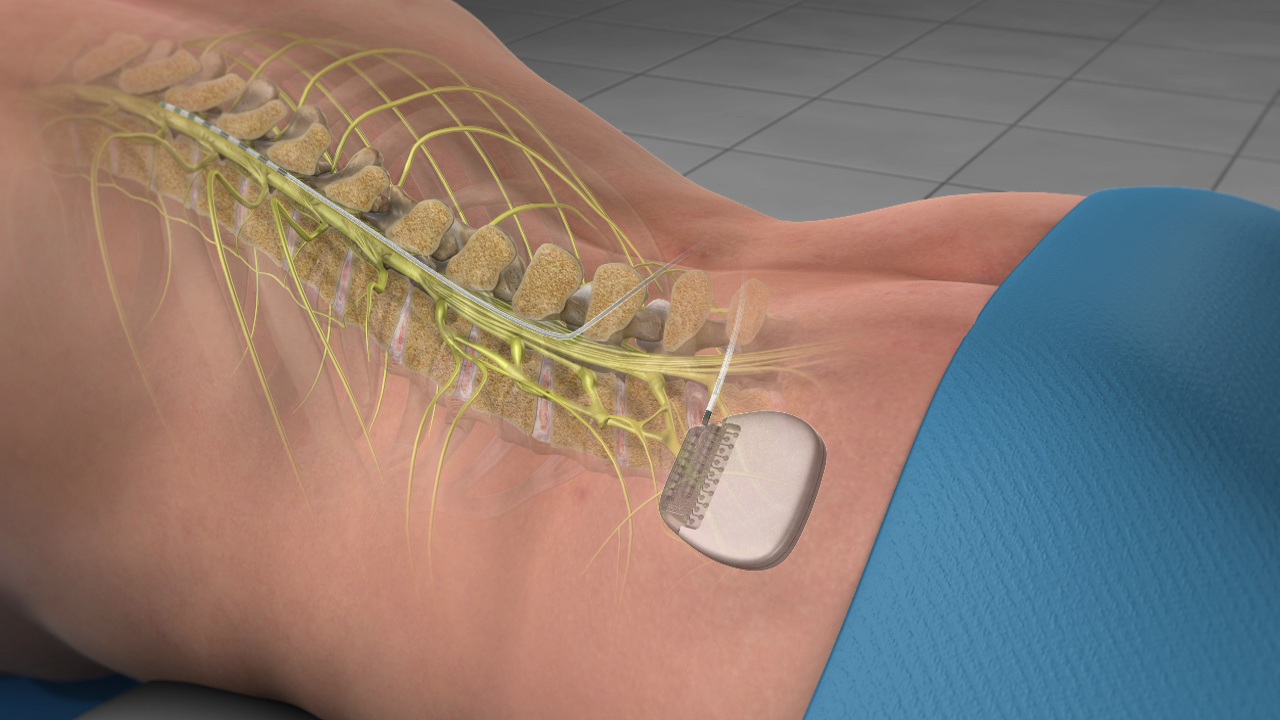One unique aspect of spinal cord stimulation therapy is the fact that the patient gets to try out the therapy before needing to commit to anything long-term. The first phase is what is called the “trial” period, which is around 5-8 days long and it is during this trial that a patient determines for themselves as to whether an SCS would be effective at diminishing or vanquishing their pain. For the trial, temporary electrodes are inserted through the skin and guided down near the appropriate level of the spinal cord and are connected to a small temporary battery that is comfortably secured to the patient’s skin. At the end of the trial, both the leads and the associated battery are painlessly and effortlessly removed, leaving just a small pinhole of a wound requiring maybe a bandage to manage. The SCS trial procedure is considered a success if at least 50% pain reduction is noted and overall function is improved. If that happens, the patient can elect to have the therapy long-term by having this system implanted. Of note, SCS implantation is a day surgery that is minimally invasive and will leave only a couple small incisions. There are just a few restrictions for a few weeks following this procedure and then a patient can return to previous activity levels. Contact your Desert Pain Specialists physician for more information about this procedure.
About the treatment
A spinal cord stimulator (SCS) is a minimally invasive procedure used to treat patients with chronic low back pain with or without leg pain, neck pain with or without arm pain, complex regional pain syndrome (CRPS), diabetic peripheral neuropathy and other types of chronic pain that have previously failed ample and proper conservative therapy. Spinal cord stimulation works by modulating the pain signals sent to the brain with therapeutic electrical impulses delivered at the level of the spinal cord. So, in the case of spinal cord stimulation, electricity is the medicine, and, even more amazing, is the fact that these electrical signals can be delivered to the body without the patient even being able to perceive them at all.

